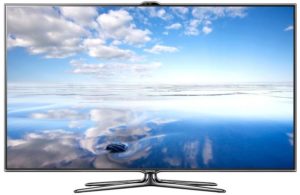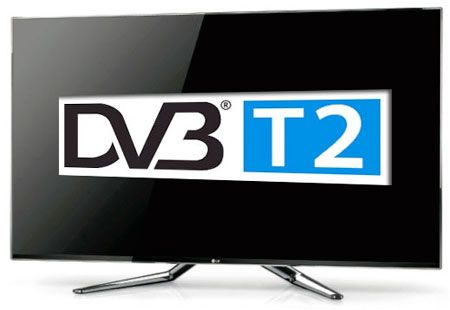The largest TV in the world
 The active development of modern technologies has significantly influenced human activity. Production processes are constantly being modernized to ensure that the products meet the needs of consumers. Now, anyone can choose exactly those TV dimensions that they consider most acceptable for a particular room.
The active development of modern technologies has significantly influenced human activity. Production processes are constantly being modernized to ensure that the products meet the needs of consumers. Now, anyone can choose exactly those TV dimensions that they consider most acceptable for a particular room.
The consumer's desires are not limited to any parameters, especially the size of the device. If you wish, you can purchase a truly gigantic copy to set up your own cinema at home. However, do not forget that the larger the size, the higher its cost.
The content of the article
The largest TV in the world
British manufacturer Titan Screens decided to break all records. To do this, over the course of 6 months, the best employees created the largest TV in the world. Its screen has a screen diagonal of 270 inches (939 cm), and it is made of a number of panels fastened together. The resulting giant was named Titan Zeus. Despite the fact that its technical characteristics are carefully hidden, the following parameters of the monster have become known:
- height 5 meters;
- width 8 meters;
- weight - more than 1 thousand kilograms.
IMPORTANT! Not everyone can afford such equipment. The cost of one such TV exceeds $1.5 million.
So far, Titan Zeus is not listed in the Guinness Book of Records. The manufacturer did not set itself the task of becoming a record holder in the field of gadget sizes. However, if the buyer needs to record this fact, the manufacturer is ready to invite a representative of the Book to take into account the existing record.
Today there are 4 pieces in the world. Titan Zeus. One of them was mounted in Cannes in a special building. The other two were purchased by individuals who remain unknown.
The history of the big TV
 From 1923, when televisions began to be developed, until the beginning of the 21st century, their appearance remained unchanged. Year after year, the consumer wanted to see an increasingly larger screen of the product, which forced manufacturers to release more and more new models. However, outdated models that had a beam picture tube inside them could not cope with this problem - the larger the diagonal of the TV became, the heavier and thicker it became. The larger the product, the more energy it required to transmit the movement of electrons across the screen.
From 1923, when televisions began to be developed, until the beginning of the 21st century, their appearance remained unchanged. Year after year, the consumer wanted to see an increasingly larger screen of the product, which forced manufacturers to release more and more new models. However, outdated models that had a beam picture tube inside them could not cope with this problem - the larger the diagonal of the TV became, the heavier and thicker it became. The larger the product, the more energy it required to transmit the movement of electrons across the screen.
Modern plasma TVs date back to the 1930s, although mass production of such equipment began only in the 2000s. The fact is that plasma specimens use in their work precisely plasma-matter in the fourth state of aggregation. Plasma screens had only temporary popularity - gradually, due to the development of modern technologies, such specimens became mercilessly outdated. First of all, this is due to the fact that such products were significantly inferior to their competitors in terms of image brightness. Because of this, it was impossible to watch movies in a brightly lit room.In addition, plasma screens had a significant size limit, which made it impossible to enlarge the screen. This technology for producing televisions had to be abandoned in 2010.
Modern models have LCD and OLED technologies. This is the latest invention that allows you to make ultra-thin TVs with the largest possible diagonals. Now you won’t surprise anyone with equipment whose diagonal is 100 inches. Such copies are used for both commercial and individual purposes. Today, few people will be surprised by the large TV that occupies most of the wall.
IMPORTANT! Modern technologies have gone far ahead, which is why new TVs have practically no weight. Having a 4mm thick screen, they can be attached directly to the wall using magnets.
Truly huge TVs are often not mass produced. They are assembled by hand, separately preparing the corresponding parts for them. After this, they are assembled from several screens and transported to the buyer.
What does the largest TV in the world look like?
 The appearance of the largest specimen is unlikely to differ in any significant way from the small one, if you do not take into account the size. It's still the same TV, which is just much larger. Titan Zeus has a 270-inch diagonal, but for fans of more familiar sized models, household appliance manufacturers offer a wide variety of TV size options.
The appearance of the largest specimen is unlikely to differ in any significant way from the small one, if you do not take into account the size. It's still the same TV, which is just much larger. Titan Zeus has a 270-inch diagonal, but for fans of more familiar sized models, household appliance manufacturers offer a wide variety of TV size options.
Pros and cons of a large TV
Modern huge TVs have not only positive, but also negative sides.
Disadvantages of a large TV:
- Increased contrast. Manufacturers have worked carefully to ensure that the TV has extreme saturation.Because of this, it is very bright and accurately conveys all the slightest colors and shades. However, such saturation has a very negative effect on human vision. Regardless of the size of the TV, you should watch it only at a significant distance and for a limited time to prevent premature eye fatigue;
- High color saturation in technology has a negative impact on the eye's ability to perceive colors;
- If a TV with a very large screen is hung at a minimum distance, when watching a particular program, pixels will be visible, which significantly spoil the picture;
- A large specimen requires significant space to accommodate it. If you have a very small apartment, a model like the Titan Zeus will be clearly inappropriate;
- Requires special wall mounting. IMPORTANT! Despite the fact that TVs no longer have such a significant cost, it is still necessary to have a strong mount that will not fail in an unexpected moment;
- Products of unusually large sizes have an equally unusually high price.
 The pluses include the image quality. The transmitted picture will be so realistic that it will allow you to completely immerse yourself in the world happening on the big screen. In addition, a large screen will allow you to create your own cinema at home and amaze your guests with the richness of color and the cost of purchase.
The pluses include the image quality. The transmitted picture will be so realistic that it will allow you to completely immerse yourself in the world happening on the big screen. In addition, a large screen will allow you to create your own cinema at home and amaze your guests with the richness of color and the cost of purchase.
When choosing a large model, you should understand that the money spent on it does not pay off. Due to constant technological progress, technology never stands still. Over the past few decades, progress has stepped forward significantly.And it’s not a fact that the money spent on a new TV today will become a waste of money a few years later, when this kind of equipment will cost much less.





